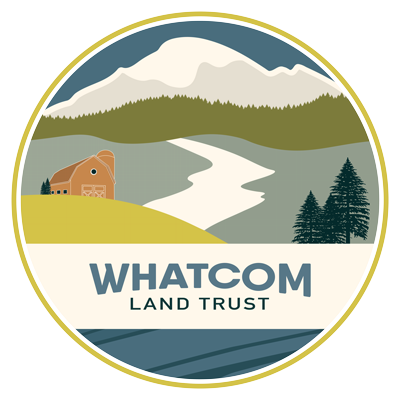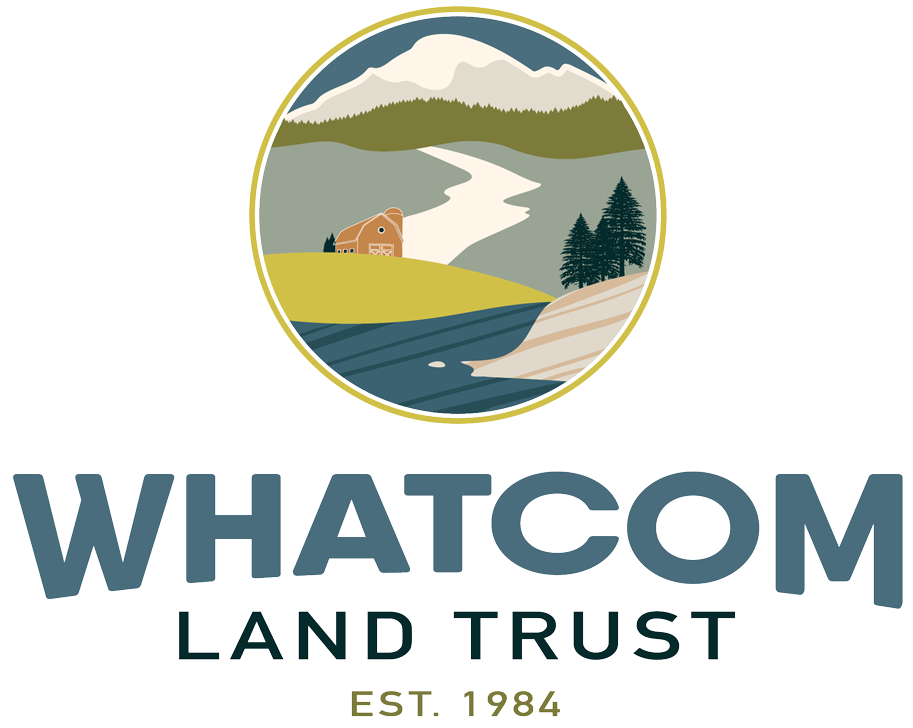Low Flow, High Heat & Habitat
An Interview with Tom Chance, Manager of the Lummi Nation Salmon Enhancement Program
By Claire Johnston, Whatcom Land Trust Communications Director
Last week, Whatcom Land Trust received a call from the Lummi Nation’s Salmon Enhancement Program Manager, Tom Chance. He was calling to share that Lummi Nation is preparing a last-ditch effort to rescue South Fork Chinook trapped below the Skookum Hatchery. A combination of low river flow, high water temperatures and limited habitat has created a perilous situation, leaving hundreds of Chinook without access to their ancestral spawning grounds. Tom’s team will access the South Fork via Land Trust properties and capture stranded Chinook for transfer to the hatchery. This operation may be essential to avoid a repeat of the South Fork Chinook die-off event that resulted from similar extreme heat and low flow conditions last September. Severe habitat degradation from legacy and ongoing land use impacts exacerbated by a shifting climate and unstable hydrological conditions have resulted in alarming river conditions throughout the year, putting the Lummi Nation’s Captive Brood program and South Fork Chinook at significant risk.
What is the Captive Brood Program and what’s at risk?
Established in 2006, the Lummi Nation Captive Brood Program was established after annual escapement estimates revealed that only 15 to 20 wild South Fork Chinook were returning to spawning grounds–making them the most critically threatened salmon stock in Puget Sound. The Lummi Nation has since taken considerable measures to prevent the extinction of South Fork Chinook stocks, in partnership with the Nooksack Indian Tribe, the Washington Department of Fish and Wildlife and NOAA Fisheries.
“Fifty percent of the females from the program don’t come back to the hatchery,” said Tom. “They stay in the river. That’s good news, because they’re producing lots of wild offspring.”
The Captive Brood Program has “quadrupled genetic diversity [of the South Fork Chinook] stock, which is almost unheard of. The goal is to maintain the program as the buffer against extinction”, he added.
However, the success of the program is threatened by record high water temperatures and extremely low river flow. Tom reports, “There’s pretty much a consensus here. It’s getting more extreme. We had an all-time record flood last year in November, but only three months earlier it was preceded by a 100-cubic feet/second extremely low flow. It’s like clockwork, you know, drought conditions and then by middle of November–boom–a huge rain event and [Chinook habitat] gets blasted out in a lot of cases.”
Recalling September 2021, Tom said, “we had these horrible conditions, and we got hit with over two thousand pre-spawn mortalities.” Pre-spawn mortalities occur when Chinook enter the South Fork but die before they are able to reproduce. In this case, fish were trapped in low, hot water just below the hatchery.
Tom is worried that if the South Fork doesn’t receive rain soon to increase flow and reduce water temperatures, another die-off event is possible this fall. This is “a concerning situation for a high priority recovery program.” Consecutive back-to-back years of poor conditions “could spell demise for the program” if the hatchery is unable to collect enough fish to spawn and sustain the program into the future.
The Lummi Nation is working to restore functioning habitat below the hatchery, where fish are currently stuck due to low flow. However, Tom points out the need for a more streamlined habitat restoration permitting process in Washington. The permitting process is complicated and costly, drawing a large percentage of grant funds that are already limited and competitive.
“We’re pushing to get a habitat restoration project done in 2024 so fish can actually go past that barrier,” adds Tom. “We want fish to come into the hatchery and we also want them to be able to get up higher, much, much higher into the South Fork so they can seek out cooler water. Otherwise, we’re going to be in this [die-off] situation every year.”
What is the Land Trust’s Role?
The South Fork needs to be stewarded with proper river function in mind. “And that’s where Whatcom Land Trust acquisition [along the South Fork] is important,” explained Tom. The Trust performs vital habitat restoration, “allowing channels to form and increasing connectedness, which is really important for spawners and increasing habitat” for salmon to avoid low flow and high heat conditions.
Whatcom Land Trust owns and stewards the Port Blakely property where Tom’s team will access Chinook stuck below the hatchery. Initially protected in 2003, the property has increased from 76 to almost 200 contiguous acres along the South Fork. Currently, the Trust is also working with the Lummi Nation to design and implement in-stream restoration at Skookum Creek Reach.
Other recent acquisitions, like the Skookum I and Skookum II properties, contribute to a nearly 5,000-acre conservation corridor along the South Fork Nooksack River. The corridor allows for large-scale restoration of the Skookum Creek watershed, which provides 21% of the late-summer coldwater input to the South Fork Nooksack River. Additional acquisitions like the upcoming Stewart Mountain 550 could help buffer against winter peak flows and hold more water in the soil to release slowly throughout the year, improving summer low flows.
As we wrapped up our conversation, Tom emphasized that South Fork salmon are “facing an uphill battle.” Community partners, whether they are organizations like Whatcom Land Trust, neighbors or those working in the greater salmon recovery community, must look toward a collaborative and interdependent future as stewards of Washington lands and waterways.
Whatcom Land Trust is honored to continue our support of the Lummi Nation and the Nooksack Indian Tribe in their ongoing efforts to save the South Fork Chinook.


